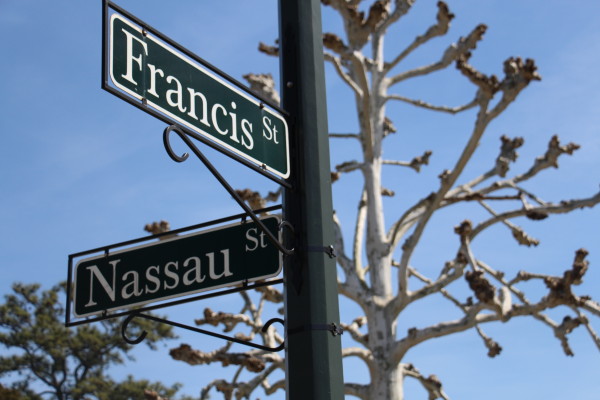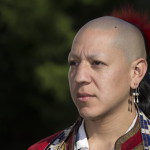 Williamsburg’s historic streets carry some historic names. Ever wonder who some of these people were, and what they did to merit the honor? Well, here are some answers.
Williamsburg’s historic streets carry some historic names. Ever wonder who some of these people were, and what they did to merit the honor? Well, here are some answers.
Duke of Gloucester Street
The street that Franklin Delano Roosevelt called “the most historic avenue in all America” (and many of us call DoG St.) was named after a ten-year old boy who died tragically just a year later.
The boy was Prince William, the nephew of William and Mary, who ruled England after the Glorious Revolution of 1688. Young William’s birth at Hampton Court Palace in Surrey was celebrated not only because he was second-in-line to the throne after his mother, Princess Anne, but also because he was the first of Anne’s seven children to survive beyond infancy. Together, it was hoped, they would preserve the Protestant succession within the monarchy.
William was afflicted by illness from his infancy, and reportedly struggled with his motor skills and learning to speak. By the time he turned seven he seemed to be improving. His concerned mother wrote, “My boy continues yet very well, and looks better, I think, than ever he did in his life; I mean more healthy, for though I love him very well, I can’t brag of his beauty.”
He fell ill for the final time on his eleventh birthday. Doctors unsuccessfully tried “cordial powders and cordial juleps,” bleeding and blistering, before the young prince finally succumbed to a “malignant fever.”
William was entombed in Westminster Abbey. His death endangered the Protestant succession, contributing to the 1701 Act of Settlement, which led to the throne being passed from the House of Stuart to the House of Hanover in 1714.
Francis and Nicholson Streets
Yep, two streets-Francis and Nicholson-named after one man. Laying out the town has its benefits.
Francis St. runs parallel to Duke of Gloucester St. to the south; Nicholson St. does the same to the north.
Francis Nicholson was born in Yorkshire, England in 1655. He first came to the colonies at the age of 30, serving as captain of a company of infantry in the sprawling Dominion of New England. In 1690 he was appointed lieutenant governor of Virginia and helped get the College of William & Mary off the ground as the head of its Board of Trustees.
Nicholson is credited with designing the town of Annapolis, which was replacing St. Mary’s as the capital, during his five-year stint as Maryland’s governor. Historian John W. Reps finds the evidence persuasive. Baroque design and radial streets suggest the work of someone exposed to, but hardly expert in, contemporary town planning. As a young military man, Nicholson’s travels took him to cities like Paris and Madrid, Cadiz and Seville. Nicholson may very well also have dropped in to see Christopher Wren and his colleagues at the office of the surveyor-general of the King’s Works while in London.
And fortuitous timing gave him the opportunity to replicate the feat after being appointed Virginia’s royal governor in 1698.
Shortly after his arrival, the state house in Jamestown burned to the ground. Nicholson seized the opportunity to move the capital to Middle Plantation, renamed Williamsburg in honor of the reigning monarch.
His term in office featured battles with some of the Tidewater’s leading men over both personal and political issues. He had a notorious temper. A 1702 account relates how the governor “flew out into such a passion against the Commissioners of the Navy, calling them all the basest names that the tongue of man could express, and with such a noise, that the people down in the lower rooms came running upstairs.” Others “came running out of their beds in their shirts, [one] without his wooden leg holding himself by the wall believing that the college had been on fire.”
And then there was the embarrassment of his failed pursuit of 18-year old Lucy Burwell, who rejected his entreaties and ended up marrying a Berkeley. The governor’s council finally turned against him, writing a plea to Queen Anne to recall Nicholson. In 1705 he was relieved of his duties and returned to England.
Nicholson died in London in 1728.
Byways and Boulevards
Many of Williamsburg’s cross streets were anonymous lanes into the 19th century, but today Colonial and other street names hearken back to before the Revolution. Some allude to Britain’s other realms: England, Ireland, and Scotland St. Nassau St. refers to the royal Dutch house of the city’s namesake, William III. There is Queen St., and there also used to be a King St. that ran from DoG St. to Francis St. south of Palace Green.
Speaking of which, Palace Green was known simply as Palace St. as early as 1722, and into the 20th century. Williamsburg was quickly known for being dusty in dry conditions and muddy when it rained. Still, visitors admired the road leading up to the Governor’s Palace as “a beautiful street” and “a pretty avenue.”
Prince George St. takes its name from the young Duke of Gloucester’s father, Prince George of Denmark (pictured above), whose arranged marriage to Anne was supposed to unite Danish and English interests. He never wielded much power, even after Anne ascended to the throne in 1702.
Back on the east end of town, Waller St. runs behind the Capitol, marking the spot where Benjamin Waller owned a large tract of land. Waller, born in King William County in 1716, was a lawyer who was deeply involved in the community. Among the positions he held were clerk and burgess for James City County, recorder of Williamsburg, vestryman of Bruton Parish Church, and judge of the Court of Admiralty. In addition to having ten children, he is credited with helping to teach law to George Wythe.
Botetourt Street
And finally, that bane of the new visitor’s map-reading experience, Botetourt St. That’s pronounced “bot-a-tot,” for the uninitiated. That’s him in the statue above, which stands in front of the Wren Building at William & Mary.
Norborne Berkeley, baron de Botetourt, was born in 1717 in London. Never married, he was a wealthy landowner and investor in businesses in Bristol. He followed in his father’s footsteps, representing Gloucestershire in the British House of Commons from 1741.
He moved over to the House of Lords after acquiring the barony of Botetourt in 1764, where he voted in favor of the Stamp Act in 1765. Botetourt successfully lobbied for appointment as Virginia’s royal governor after Lt. Gov. Francis Fauquier’s death.
He arrived in Virginia Oct. 26, 1768, the first governor to actually reside in the colony in some 60 years. (Most Virginia governors were absentees, letting their lieutenants handle the regular operation of colonial government.)
In London, Botetourt had palled around with King George III and the much-despised Lord Bute, and supported the policies that were inspiring colonial protests. On May 17, 1769 he dissolved the General Assembly after the House of Burgesses drafted a letter to the king claiming Parliament had no right to tax the colonists.
Even so, Botetourt was a popular governor.
But his time in Virginia proved to be brief. He died at the Governor’s Palace on Oct. 15, 1770, and his body was interred in William & Mary’s chapel. The Purdie & Dixon’s Virginia Gazette lamented “the loss of the best of Governours and the best of men.”
Back to the statue. The one in the Wren Building’s yard is a replica of the original, which is in the college’s library. You can also find it represented in the corner of the famous print, The Alternative of Williamsburg, where the statue of Lord Botetourt is part of the background in a sharp critique of the dark side of colonial protest.
Funny how when you look around town, so many ghosts have royal blood.



The last paragraph is superfluous. Of course the streets were largely named after royals. They had power, money, and influence and pandering to the powers that be is not new to the 21st century.
Fair point. But I thought it was interesting, given that most streets were named after the Revolution, that they aren’t named Washington, Jefferson, or Wythe. We do have Henry Street, though. And many of our offices are on Franklin Street, though I can’t say for certain if it was Ben it was named after.